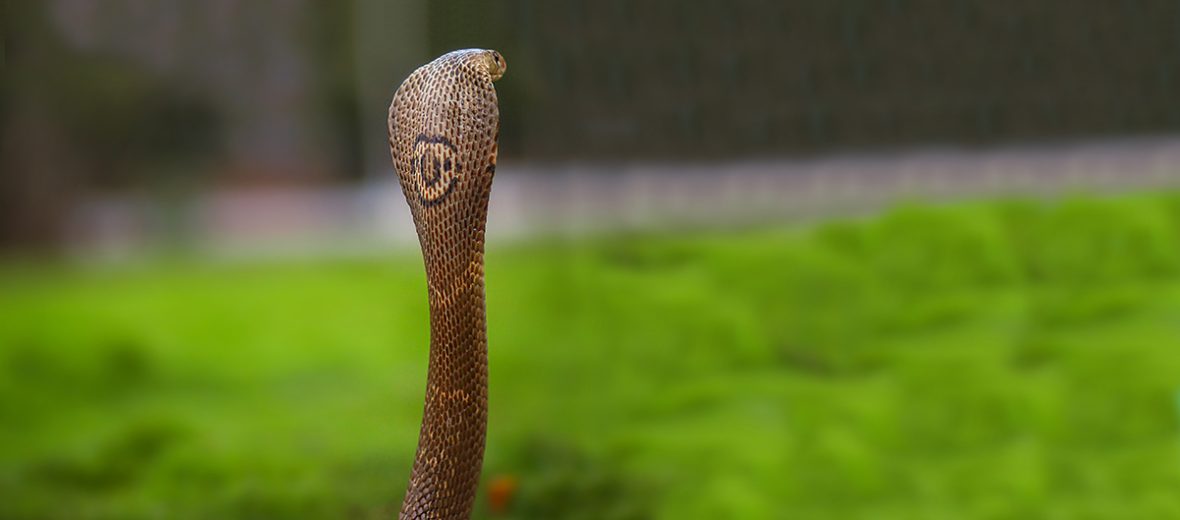
The monocled cobra, aka monocellate cobra or Indian spitting cobra, can be found throughout south and southeast Asia. They are typically found dwelling in swamps, mangroves, paddy fields, grasslands, forests, shrublands, agricultural fields, villages, and even in cities. Even though they face the threats of hunting and trapping for their meat, skin, and for traditional medicine, these snakes are listed as Least Concern by the IUCN. Their numbers are decreasing throughout their ranges though.
First the Stats…
Scientific name: Naja kaouthia
Weight: Up to 5+ lbs.
Length: Up to 5.9 feet
Lifespan: Up to 20 years
Now on to the Facts!
1.) Monocled cobra bites cause the highest fatality due to snake venom in Thailand.
2.) These cobras are considered to be highly defensive.
3.) The monocled cobra is semi-aquatic (spends part of their life in, or near water).
4.) Being solitary, these snakes only come together to mate.
5.) Most of the time, when faced with a threat, they will flee. However, if cornered, they will take on the characteristic stance, with their head raised off the ground and hood expanded. They will then hiss loudly and attempt to strike.
But wait, there’s more on the monocled cobra!
6.) Some monocled cobras even have the ability to spit venom at an attacker. They also do so with surprising accuracy.
7.) They prey on amphibians, other snakes, rodents (like mice and rats), and fish.
Did you know…?
Their venom contains postsynaptic neurotoxins. These toxins, if injected, can result in drowsiness, hypotension, flushed skin, flaccid paralysis, and even potential death due to respiratory failure. Death can occur, in extreme cases, in up to just 1 hour!
8.) The average bite yields up to 0.009 ounce of venom.
9.) These serpents are typically crepuscular (active at dawn and dusk),
10.) Females are oviparous (egg laying) and produce up to 33 eggs each season.
But wait, there’s still more on the monocled cobra!
11.) Eggs hatch in up to 73 days.
12.) The female will usually guard the eggs till they hatch. The snakelets are born precocial (totally self sufficient) and fully venomous.
Now a Short Monocled Cobra Video!
Be sure to share & comment below! Also, check out the Critter Science YouTube channel. Videos added regularly!
Want to suggest a critter for me to write about? Let me know here.



